‘Wallpaper in its embryonic state is more finished than that seascape,’ said Louis Leroy of Monet’s Impression, Sunrise (1872), in his review of the Impressionists’ first exhibition in 1874. Their work is so familiar to us now, though, that it’s hard to imagine the outrage caused by the snook the Impressionists cocked at the 19th-century French artistic establishment.
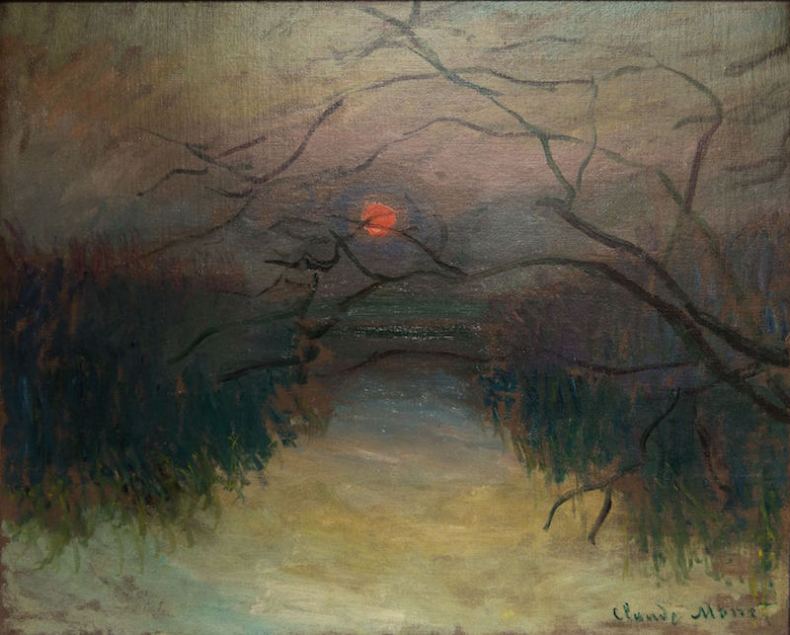
Sunset (1880), Claude Monet. Private collection
‘Inspiring Impressionism’ at Scotland’s National Gallery – a collaboration with the Taft Museum in Cincinnati, and the Van Gogh Museum in Amsterdam – is that rare thing, an exhibition that tells us something new about the Impressionists, partly by questioning our accepted understanding of their revolutionary impact. In this case, the ‘inspiring’ is being done by Charles-François Daubigny (1817–78), whose landscapes were derided as mere ‘first impressions’ as far back as 1861, and whose influence on Monet, Pissarro, Sisley, and even Van Gogh the exhibition traces. Over 100 works are on display, yet the handsome scale belies a modest aim: the gentle restatement of the qualities of an artist whose influence, while no secret, remains underappreciated.
Daubigny championed the young Impressionists’ cause, eventually resigning his position on the Salon jury in 1870 in protest at the rejection of Monet’s The Luncheon (1868–69). As a member of the Barbizon School, Daubigny was committed to capturing nature ‘as it was’ rather than as framed by classical convention. One of the first paintings on display here, The Crossroads of the Eagle’s Nest, Fontainebleau Forest (1843–44), shows a figure we can assume to be Daubigny heading along a path into the forest where the Barbizon School did much of their work, a canvas strapped to his back. Whereas most of the Barbizon artists painted in their studios, from sketches made outside, Daubigny increasingly practised painting en plein air, scraping a palette knife across the canvas to create texture (‘Mr Daubigny’s Snow is a piece of plaster spread with a palette knife’, sniffed Max de Montifaud in 1873), and making quick dabs of colour; capturing nature ‘as it was’ meant attempting to capture it as it was experienced. The roughness of the strokes in The Coming Storm, Early Spring (1874) reflects the speed at which Daubigny had to work in order to record the passing storm-clouds, just as they convey the wind’s ruffling of the grass below, and perhaps the ruffling of the painter’s own calm at the approach of inclement weather.

Cliffs at Villerville-sur-Mer, (1864 Salon, 1872), Charles-François Daubigny. The Mesdag Collection, The Hague
For the Impressionists, the appeal of Daubigny’s approach is obvious, even if their perspectives are more unbalanced, their brushwork freer. Monet’s Seashore at Sainte-Adresse (1864), painted as if the artist were stood at shore level looking down the beach, the shallows rippling with simple grey licks of paint, follows Daubigny’s more careful, panoramic Cliffs at Villerville-sur-Mer painted the same year; the two spots are only a few miles apart along the Normandy coast. Later works by Daubigny, including his reworkings of the Cliffs at Villerville-sur-Mer in 1871 and 1872, suggest that he himself was inspired by Impressionism; the sherbet sunset in Beach at Villerville at Sunset (1873) and the woozy peach warmth of the sun in Sunset near Villerville (c. 1876) seem taken from an Impressionist palette. Just how far Daubigny influenced Monet and vice versa is left open to interpretation here. But a startling use, or rather perception, of colour, had long been a feature of Daubigny’s work. The Goncourt brothers admired the ‘pink band of light [cutting] across the full width’ of what is a fairly wan horizon in his Harvest (1851); even more thrilling is the nonchalant dappling of scarlet and cornflower among the haze of wheat in the foreground.

Sunset near Villerville (c. 1876), Charles François Daubigny. The Mesdag Collection, The Hague
Daubigny’s influence was often a practical one. He introduced Monet and Pissarro to Paul Durand-Ruel, the dealer who became one of the most important advocates of the Impressionists; he also introduced Monet to the idea of using a studio boat (the final room of the exhibition is mystifyingly given over to a recreation of Daubigny’s studio boat, ‘Le Botin’). Van Gogh, although no Impressionist, felt this influence as much as anyone. Appearing to interpret it in a straightforward, if madly literal sense, he moved to Auvers-sur-Oise, the town in which Daubigny had lived, for the final months of his troubled life.
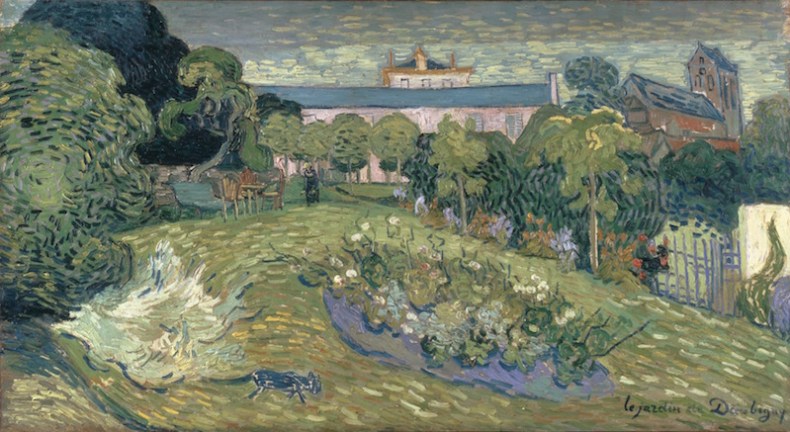
Daubigny’s Garden (1890), Vincent van Gogh. Collection Rudolf Staechelin
Van Gogh’s work during this period – which includes three paintings of Daubigny’s garden – is a logical culmination of certain themes that also occupied Daubigny: an awareness of how the materials through which an impression of landscape is registered become a part of that impression, and the knowledge that if a landscape can only be communicated through an individual’s experience of it, then an individual’s emotions will find their way into that landscape. The red splodges serried across the green in Van Gogh’s Field with Poppies (1890) offer an expression of joy too intense to seem sustainable. So it proved. Of the ‘vast fields of wheat under troubled skies’ in his Wheat Field with Crows painted in Auvers later that year, Van Gogh wrote to his brother Theo that he did not ‘need to go out of my way to express sadness and extreme loneliness’. A few weeks later, he took his own life. Perhaps it was this sort of thing that Daubigny’s conservative critics had been afraid of.
‘Inspiring Impressionism: Daubigny, Monet, Van Gogh’ is at the Scottish National Gallery until 2 October. It tours to the Van Gogh Museum, Amsterdam, from 21 October–29 January 2017.
From the September issue of Apollo: preview and subscribe here
Unlimited access from just $16 every 3 months
Subscribe to get unlimited and exclusive access to the top art stories, interviews and exhibition reviews.

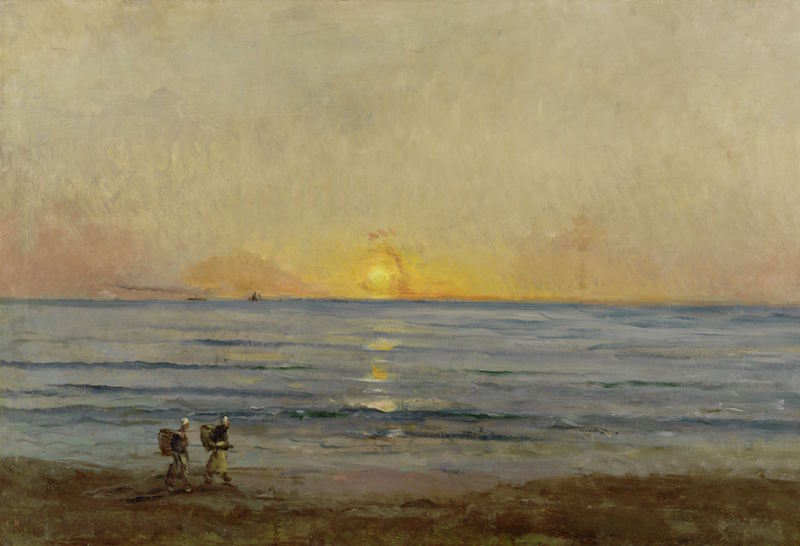
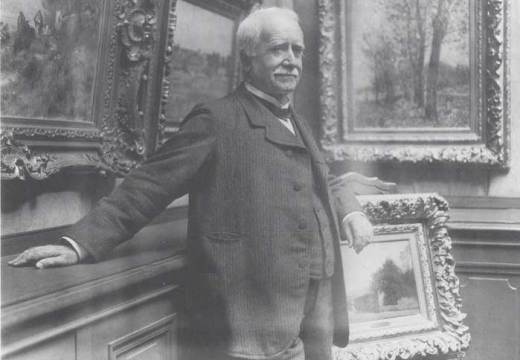
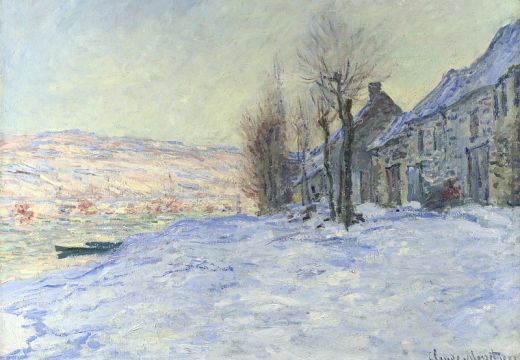
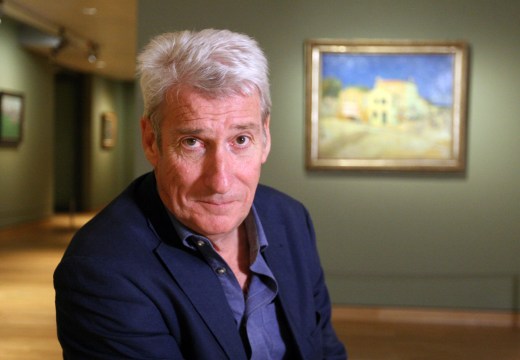









![Masterpiece [Re]discovery 2022. Photo: Ben Fisher Photography, courtesy of Masterpiece London](http://www.apollo-magazine.com/wp-content/uploads/2022/07/MPL2022_4263.jpg)
Why are fathers so absent from art history?